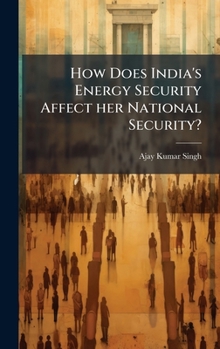How Does India's Energy Security Affect her National Security?
India faces formidable challenges in meeting its energy needs and providing adequate and varied energy of desired quality to users in a sustainable manner and at reasonable costs. With a population in excess of one billion, India needs economic growth for human development, which in turn requires access to clean, convenient and reliable energy for all. The keys to energy security are assurance of supply and diversity of sources. As India seeks to secure her energy security needs, it is probable that she will seek to explore new options. The wars in Iraq and Afghanistan have led to spiraling oil prices which have adversely affected the Indian economy. The major impediments to India's ability to secure her energy are inadequate domestic energy capacity, the conflicting interests with China and India's geographic location. The Indian government has followed a policy of resource diversification. Overland trans-national energy pipelines are one of the options being explored by India to meet her energy security requirements. Overland trans-national energy pipelines by their very nature incorporate multiple nations (source nations, transit nations and destination nations) and are affected by regional and geo-strategic interests of the nations involved. Thus, they provide an excellent platform for analysis of India's energy and geo-strategic interests and its security. Based on this premise the study shall limit itself to assessing the feasibility of overland trans-national energy pipelines and determining the effects of such pipelines on India's energy security and its national security.
This work has been selected by scholars as being culturally important, and is part of the knowledge base of civilization as we know it. This work was reproduced from the original artifact, and remains as true to the original work as possible. Therefore, you will see the original copyright references, library stamps (as most of these works have been housed in our most important libraries around the world), and other notations in the work.
This work is in the public domain in the United States of America, and possibly other nations. Within the United States, you may freely copy and distribute this work, as no entity (individual or corporate) has a copyright on the body of the work.
As a reproduction of a historical artifact, this work may contain missing or blurred pages, poor pictures, errant marks, etc. Scholars believe, and we concur, that this work is important enough to be preserved, reproduced, and made generally available to the public. We appreciate your support of the preservation process, and thank you for being an important part of keeping this knowledge alive and relevant.





